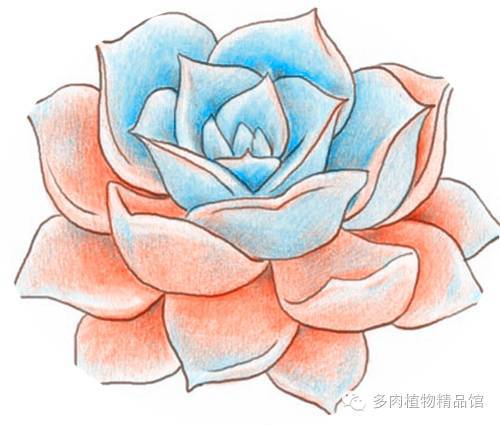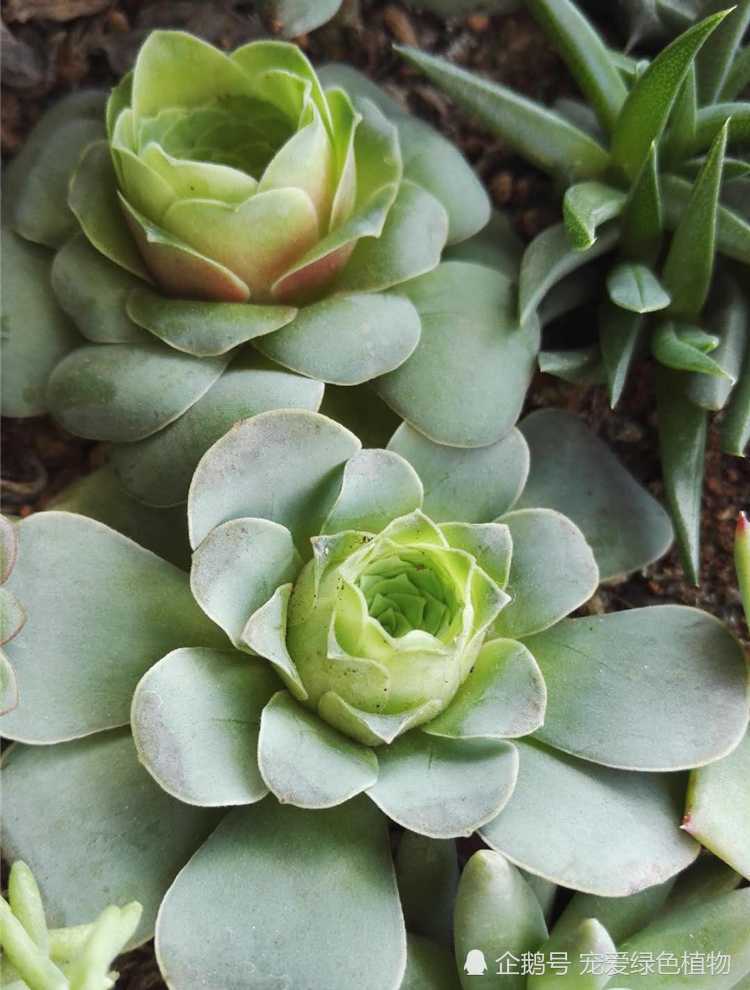There is not much clear flow in the citrus family. Lemon is a

The author complains that
In order to finish this article, I drank at least five cups of frozen lime tea.
Well, everyone must have heard of the chaotic family history of citrus fruits (Citrusspp.): people are constantly worried about these gossip, and even give rise to lily stories in which legal sisters attract each other (not. ). This finally alarmed Nature magazine, and earlier this year, scientists published for the first time a comparison of citrus fruits at the entire genome level, and concluded that the oranges had changed.
Fortunately, I confirmed that what I am going to say today is Citrus×limon, which is a cross between citron (C. medica) as the male parent and lime (C. × aurantium) as the female parent. The seed addition of lime is also preceded by an x, which means it is also of hybrid origin. Its father is pure citrus (C. reticulata) and its mother is pomelo (C. maxima). In short, it is a simple story between the three simple families, and it can be called a five-good family compared to the chaos that happened to other members of the citrus family.
Today's protagonist is as pure as a daisy, fresh and loving lemon. Picture: Pixabay
Family history is also. It's not easy.
The story begins about 8 million years ago, in the late Miocene. At that time, the ancestors of humans and chimpanzees had just parted on the African continent, and there were still three-toed horses running on the North American continent, while the collision between India and Eurasia entered the best part, and the Himalayas uplifted violently, causing the climate to become dry and cold. the oceanic monsoon weakens and vast grasslands appear in the middle of the continent. The ancestors of the genus Citrus, who lived in the forests at the foot of the Himalayas (probably between present-day northern Myanmar, Assam, and western Yunnan), began to "adapt to radiation" with changes in topography and climate, that is to say, it evolved different species in all directions.
The history of diffusion and evolution of the genus Citrus inferred from the reconstruction of ancestral genotypes. The red five stars represent the Miocene fossils of the genus Citrus in Lincang, Yunnan. Picture: Wuet al. 2018 / Nature554: 311mi 316; Sinicization: purple snipe
Today, the Miocene fossil C. linczangensis we found in Lincang, Yunnan, may represent the appearance of the citrus ancestors at that time: it has a typical "single compound leaf". Unlike C. trifoliata, a living northern species with typical three-foliolate compound leaves of the family Rutaceae, the leaflets on both sides of the compound leaves degenerate and merge with the leaf axis, which looks like a single leaflet attached to a winged petiole. ). As for trifoliate orange, it is not produced by "tangerine Huaibei". It has been separated from citrus species for a longer time and should even be classified as another genus (Poncirus). In 1984, a more primitive species of trifoliate orange (P. polyandra) was discovered in Fumin, Yunnan Province.
The picture on the left shows the fossilized leaves of the Miocene citrus genus C. linczangensis found in Lincang, and even the single compound leaves love you. The picture on the right shows the trifoliolate compound leaf of trifoliate orange. Picture: Xieet al. 2013 / Intl. J. Plant Sci. 1201-1207; Magyar / Wikimedia Commons
The relationship between hybridization and evolution of common citrus fruits on the market. Picture: Wuet al. 2018 / Nature554: 311Mui 316; Sinicization: Liu Jie
Separated citrus species retain a habit that is a headache for biologists and loved by working people: they can interbreed with relatives from time to time, still like a loving family. Oranges that enter China are known as "wide-skinned oranges" because they are easy to peel. They were later used by foodies to reduce acidity and improve their taste by constantly reducing acidity and improving their taste by being indescribable with grapefruit (many crosses and backcrossing of offspring). Today, all kinds of oranges and oranges are born.
Fortunately, 2 million years ago, an ice maximum in the Pleistocene made oranges that had not encountered humans cross the land bridge to Japan, called C. r.subsp.tachibana (Taiwan is also known as tangerine = = | |), leaving a subspecies as pure as broad-skinned oranges. However, the Japanese word for "grapefruit" is an orange (C. × junos) derived from a cross between a purebred citrus and a Yichang orange.
The orange, also known as "grapefruit" (Japanese yuzu or Korean yuja) in neighboring countries, actually has the gene of Yichang orange. Yes, it is used in grapefruit tea. Picture: / Wikimedia Commons
How did lemons come from?
If the Chinese people are so good at cultivating citrus fruits, why does the name lemon sound like a transliteration? According to the limon in the scientific name, is it translated by a southerner who can't tell the difference between nasal and lingual sounds? Actually, it's not that simple.
Probably the Chinese discovered or cultivated the hybrid lime of pure citrus and grapefruit a long time ago. As mentioned earlier, this is a simple family story of parents, which may have occurred naturally in the early stage of species differentiation, but its name is sour. So Chinese interest turned to the cultivation of later sweeter oranges and oranges, while limes spread to the West. It may have been a fateful encounter in India with citron, the father of all lemons and limes: lemon in Sanskrit means nimb lemon, westward into ancient Persia and Arabic, and Latin limon. )
The Hicks Rotufola Mosque of the Sufi dynasty in Isfahan has a dome covered with exquisite lemons (or, in fact, eyes). Lemon lovers must pay homage. Picture: Phillip Maiwald / Wikimedia Commons
It is said that Citron is autistic and eccentric because it has evolved closed pollination, so it is pure and difficult to cross with other species, and it also plays with its own strange deformation of bergamot with separate carpels. But there are exceptions to everything, and watery oranges have also succeeded in making citron the father of coarse lemon (C. × jambhiri), which we believe is an ancient natural hybrid (perhaps before Citron developed the good habit of autism). But later, with the help of humans, citron pollen was used to breed all kinds of species that needed its pure aroma, and became fathers.
The male parent of all lemon and lime fruits: Citron Citrus medica, this is how it does not separate into bergamot fruits. Picture: Marrabbio2 / Wikimedia Commons
People in South and West Asia match grilled meats with the aroma of citron and the taste of limes, which may be the reason for the birth of lemons. Although there are stories of Jews in Jerusalem throwing lemons at erroneous priests in 90 BC, and lemons arriving in ancient Roman Italy as late as the second century AD, it is not ruled out that they are just some cultivated species cultivated by citron. The ancient Persian word for "citrus fruit" is just "citrus fruit". After all, Linnai's first edition of Flora still included lemons in the citron species.
Lemon trees are also now grown outside the Catholic church in the biblical city of Bethharan. Picture: lpj.org
Lemons as we know them today may have been introduced to Persia, Iraq, and Egypt in the 8th century, during the rise of Muslims, and were first described in Arabic agricultural literature in the 10th century, initially as Islamic courtyard plants. and then spread to the Mediterranean. Large-scale lemon cultivation in Europe began in Genoa in the mid-15th century, and then lemon seeds were brought to the New World by Columbus. Today, we can eat American lemon tart or Mexican lemon pie.
As for Citrus×limonia, which the foodie Su Shi may know, now semi-wild in southern China, it is another cross between citron and citrus, perhaps related to the Muslim caravan sailing eastward.
Today, what is called Li Mon in Chinese is a cross between citron and citrus. I wonder if Su Shi was talking about it. Picture: Amada44 / Wikimedia Commons
Lemons that can save lives.
Intriguingly, Muslim fleets may have known for a long time that lemons can cure scurvy, but even if da Gama, who arrived in India, was told, 116 of his 170 crew members still died of the deadly disease, which causes sore limbs, bleeding gums and weakness. Later, the Magellan fleet sailing around the world was almost wiped out, and most of the crew died of scurvy. It's sad to think that Columbus might have brought lemon seeds to America in 1492.
However, those people and their time represent the initial exploration that human beings have the courage to challenge ultra-long-distance navigation. During the short voyage before that, it was relatively easy to replenish fresh food along the way, but in the 16th century, when the spirit of science was not accepted, it was difficult to systematically analyze the role of lemons in treating scurvy, and the lemons on board were not easy to keep fresh. later, as the Spanish and Portuguese empires increased in the strategic ports that could be supplied along the way, the role of lemons was no longer valued.
From the end of the 15th century to the beginning of the 16th century, the great new routes that connected the world and their pioneers: Columbus, da Gama, Magellan. Photo: George M. Wrong 1905 / Internet Archive Book Images
In the centuries that followed, people realized the importance of supplementing fresh vegetables in the prevention and treatment of scurvy. In 1747, British Royal Navy ship doctor James Lind (James Lind) confirmed the effect of lemon and orange on scurvy through scientific comparative experiments for the first time. Unfortunately, the treatment he recommended was only a small part of a long report, and vitamin C, which was only discovered in the 20th century, as the root cause of all this is unknown, so the Royal Navy died of scurvy more than combat attrition in the 18th century. Until 1768-1771 sailing around the world, Captain Cook, who had read Linde's report, finally did not let any of the crew die of scurvy.
A painting showing James Linde (James Lind) treating scurvy with lemon. Picture: Institute of Naval Medicine / BBC
In the formula for scurvy, there is also a class of fruits in English called lime, which may come from Laymyogn in Arabic, which has the same vocabulary as lemon. Most of them are "lime lines" that do not contain citrus or lime genes and are a series of masterpieces of citron dads and floret orange mothers. One of the most common is the round smooth lime, which is now popular in Corona beer or mojito cocktail, transliterated as "lemon", and lemon (C. × aurantifolia) also has a variety of complex chromosome ploidy and hybridization, resulting in different strains of diploid, triploid and tetraploid.
Mojito, a popular rum-based drink with lemon, mint and soda, should be translated as moxito according to the authentic Cuban pronunciation. Picture: TheCulinaryGeek / flickr
A little extra gossip about the wild female parent Xiaohua orange: its evolution in Southeast Asia is elusive, and it is likely to be a synonym for the crumpled arrow leaf orange (C. hystrix) commonly used in Thai cuisine, or at least a common ancestor with the arrow leaf orange, and it also shares a common ancestor with three species, including Australian lemon (C. australis). These should be the natural origin without human intervention, and in the end, human beings hand it over with citrus to all kinds of other limes.
Once again, I am glad that today's topic is yellow and pure and beautiful lemons, not all kinds of limes that are as chaotic as Chinese citrus fruits (omitted as orange oval in the picture). It is powerless to be Sinicized. Remember that the top row of wild species are small flower orange, citron, citrus and pomelo from the left. For the rest, please see the Latin name and English name for yourself. Picture: Curket al. 2016 / Annals of Botany 117 (4): 565 Murray 583
Traditionally, biological definition of species is the reproductive isolation between populations. In the long vicissitudes of nature, genes converge into intertwined streams to flow to future generations, either because of the barrier between mountains, rivers and oceans, or because there is no medium with the earth, creating the so-called species we know, but random infiltration and communication is always inevitable, and fate is not entirely controlled by its own genes: pollinators and climate change, and the show will come later, such as human beings and other hardworking and brave social species. They will also use acquired habits, values and other cultural memes that can be called "stalks" to stir up the trickle of genes and let species and civilizations evolve in the interweaving.
This is the 277th article in the fourth year of the species calendar, from the author of the species calendar @ purple snipe.
- Prev

A necessary fleshy balcony with its own fragrance
Full-text picture and text: falling in love with cute is a big trick for succulent plants. How many meat friends are poisoned because of their cute state, but the meat that the editor is going to introduce today is not only so simple as cute, they.
- Next

Meat friends share: how do I do my succulent leaf from 1 leaf to 1 whole plant?
Meat friends share: my leaves are succulent, from 1 leaf to 1 whole plant, how do you do it? After four years in the pit, I have experienced numerous cycles of "buying and hanging" and naturally developed the necessary skills of "leaf insertion". I bought one online in October 2017.
Related
- Wuhan Hospital Iron Tree Blooming Result Was Instantly Frightened by the Gardener Master
- Which variety of camellia is the most fragrant and best? Which one do you like best?
- What is the small blue coat, the breeding methods and matters needing attention of the succulent plant
- Dormancy time and maintenance management of succulent plants during dormancy
- Minas succulent how to raise, Minas succulent plant pictures
- What are the varieties of winter succulent plants
- How to raise succulent plants in twelve rolls? let's take a look at some experience of breeding twelve rolls.
- Attention should be paid to water control for succulent plants during dormant period (winter and summer)
- Watering experience of twelve rolls of succulent plants
- Techniques for fertilizing succulent plants. An article will let you know how to fertilize succulent plants.

